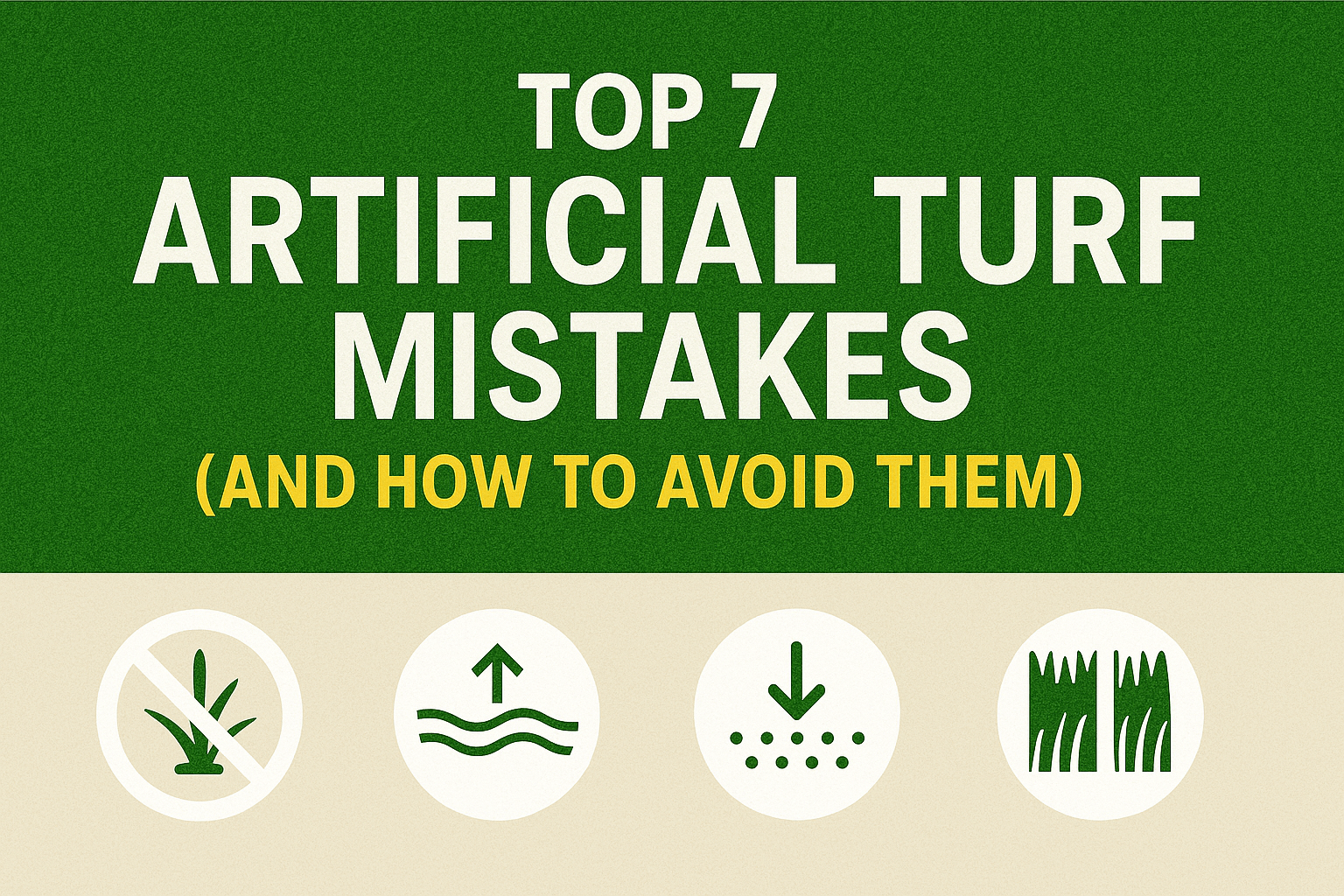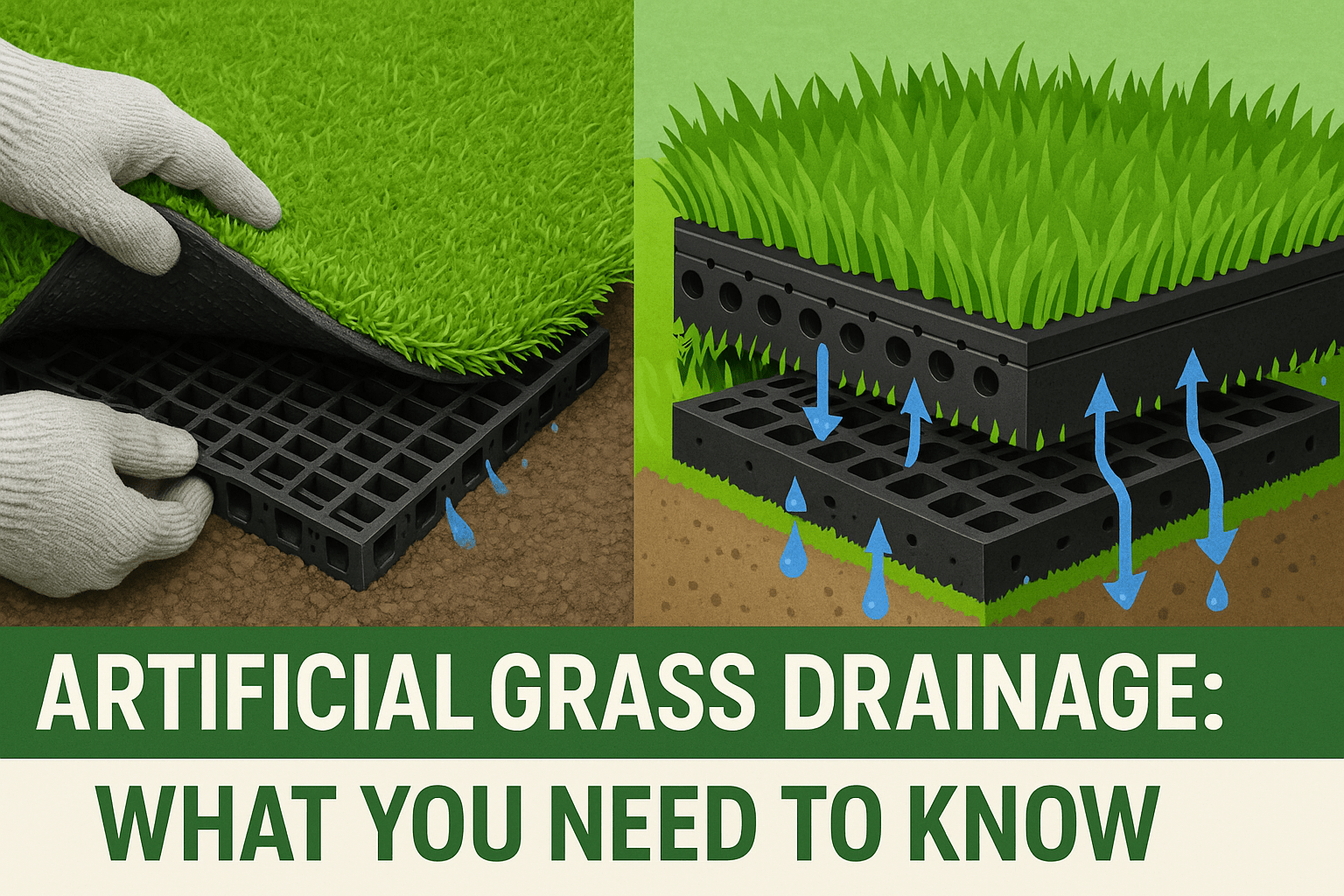Installing artificial grass can make your yard look neat and green all year. But to keep it looking good, you need to finish the edges properly. That’s where turf edging helps.
Good edging keeps your artificial turf in place and makes it last longer. It also adds to the look of your lawn or patio. Without it, the turf may shift, fray, or look messy.
Today, you can choose from many edging styles. Some work better for DIY projects. Others are made for pro installations. Picking the right one makes a big difference.
Why Artificial Turf Edging Matters
Installing artificial grass can make your yard look neat and green all year. But to keep it looking good, you need to finish the edges properly. That’s where turf edging helps.
Good edging keeps your artificial turf in place and makes it last longer. It also adds to the look of your lawn or patio. Without it, the turf may shift, fray, or look messy.
Today, you can choose from many edging styles. Some work better for DIY projects. Others are made for pro installations. Picking the right one makes a big difference. And with durable, high-quality turf like LITA Grass, the right edging helps your lawn look natural and stay secure for years.
Key Considerations When Choosing Turf Edging
Before picking an edging, think about your base. Is it soft soil, a concrete patio, or a hardscape surface? Some edging types work better with certain ground types.
Next, look at your landscape design. Do you want smooth curves or straight lines? Flexible edging is better for curved spots.
Also, consider how the space will be used. A quiet garden needs less support than a sports field or pet turf border. High-traffic areas need stronger edging.
Think about your budget too. Some options cost more but last longer. Others are cheaper but may need replacing sooner.
Finally, check if the edging works with ADA site compliance or infill systems. The right choice makes your artificial grass look better and last longer.
Top Artificial Turf Edging Options
Picking the right edging for your artificial turf helps your lawn look clean and stay in place. Some edging types are easy for beginners. Others are made for tough jobs and professional use. Let’s look at the most popular options.
Wonder Edge: Tool-Free, ADA-Compliant Edging
Wonder Edge is a smart edging system made just for artificial grass. It has a special open slot where the edge of the turf can be tucked in. You don’t need to dig or use many tools. You simply place it on top of a hard, flat base like compacted soil, concrete, or pavement.
This type of edging works well for pet areas, tree wells, playgrounds, gyms, and other flat surfaces. It also meets ADA rules for wheelchair access, which makes it great for homes, schools, and parks.
Wonder Edge comes in two styles. The standard version works for most flat surfaces. The low-profile version is better for tight curves and areas where you need a smoother, lower finish.
The best thing about Wonder Edge is how fast and neat it looks after install. It saves time and helps your turf last longer. However, it does cost more than other edging types and works best when the ground is already smooth and level.
Polyboard Edging
Polyboard edging is made from recycled plastic, but it looks like wood. It’s a favorite among turf installers because it’s strong, bendable, and can handle weather and moisture. It’s also eco-friendly and lasts a long time.
This edging is a great choice for landscape designs that need curves or uneven shapes. It’s often used between turf and things like rocks, mulch, or soil. You can bend it around corners, and it stays in place with long nails or stakes.
Before installing, the base should be packed tight. After that, the edging is staked down. Once it’s secure, the soil behind it should be filled back in to hold it in place.
Polyboard is a good mix of strength and looks. It’s easy to work with and perfect for both DIY and professional turf projects. Just make sure to secure it well to avoid loose edges in the future.
Bender Board
Bender board is a flexible plastic edging that bends easily around curves and corners. It’s one of the easiest edging types to use, especially for beginners. Even though it’s made of plastic, it has a wood-like texture, so it still looks natural in a yard.
This type of edging is often used for fun and creative shapes in a lawn or garden. If your artificial turf has many curves or circles, bender board makes the job simple. It also costs less than other options and doesn’t rot or break easily.
People like bender board because it’s light, easy to install, and gives a clean edge that lasts for years. It’s perfect for DIY projects where you want a neat finish without spending too much.
Concrete Curbing
Concrete curbing gives a strong, clean, and polished edge around your artificial lawn. It’s permanent and can be shaped into straight lines or smooth curves. Many people pick this type of edging because it looks great and doesn’t wear out easily.
You can choose from different colors and shapes to match your home or yard. This makes it perfect for modern lawns, driveways, and patios. Once installed, it doesn’t move or shift like other edging types.
Installing concrete curbing takes special tools and skill. Most people hire a pro to do it. It costs more than plastic or wood edging, but it can last for many years with little care.
If you want a solid, stylish edge for your turf and don’t mind the extra cost, concrete curbing is one of the best choices.
Composite Plastic or Wood-Plastic Edging
Composite edging is made by mixing plastic and wood. It looks like real wood but is much stronger and doesn’t rot or fade as fast. This type of edging is a smart choice for people who want their lawn to last a long time with little maintenance.
It works well in modern yards with clean lines and sharp corners. You can use it in straight areas or bend it slightly for gentle curves. It holds up in all kinds of weather and keeps your turf edge clean and firm.
Composite edging does cost more than basic plastic or wood. But because it lasts longer and looks better for years, many people think it’s worth the price. If you want a sharp and modern look, this edging gives you a clean finish with strong support.
Steel or Aluminum Edging
Steel and aluminum edging gives a clean, sharp finish to your artificial grass. It looks modern and doesn’t take up much space. The thin metal design blends well into any landscape without standing out too much.
Even though it’s thin, this edging is very strong. It works well in places with lots of foot traffic, like walkways or public lawns. Professionals often use it for big landscape designs because it lasts a long time and doesn’t bend or crack under pressure.
This edging is also a little flexible. You can shape it around curves or corners with the right tools. Once it’s in place, it stays put and needs almost no care. Rain, sun, and snow don’t damage it easily. If you want an edge that looks clean and lasts for years, steel or aluminum is a smart pick.
Timber and Sleeper Edging
Timber edging gives your yard a warm, natural look. It’s made from wood and is easy to cut and shape during installation. Many people like it for its simple, rustic style. You’ll often see it in gardens, flower beds, and smaller lawns.
Sleeper edging is thicker and heavier than regular timber. It’s strong enough to be used as a raised border or small wall. Some homeowners even use sleepers to build flower boxes or level off parts of the yard.
Both timber and sleepers can rot over time, especially in wet areas. You may need to paint or seal the wood to protect it. With the right care, timber edging can last a long time and keep your artificial lawn looking neat.
This type of edging works best when you want a natural feel in your landscape. It also gives strong support to your turf when used around garden edges or retaining walls.
Brick, Stone, or Paver Borders
Brick, stone, and paver edging is one of the most decorative ways to border artificial turf. These materials are strong and give your space a classic, elegant look. They are perfect for separating turf from flower beds, pathways, or patios.
This type of edging is usually not meant to hold turf in place by itself. It works better as a visual border than a structural one. But it still helps the turf stay in shape and adds beauty to your yard.
You need a solid base to install these materials. It’s a good idea to level the area and use sand or cement to hold the pieces steady. Brick and stone are heavy, so they rarely move once placed.
If your goal is to improve the look of your artificial lawn and add charm to the space, stone or paver edging is a great option.
Rubber Edging (For Temporary or Indoor Installs)
Rubber edging is a soft and flexible way to finish the edge of artificial grass. It’s not made to hold turf in place but is used to cover the edge and make it safer. It helps stop people from tripping on the edge of the turf.
This type of edging is usually found indoors or in commercial places like showrooms or trade shows. It’s also used in temporary setups like party areas or short-term displays. Because it’s easy to move, you can take it off or adjust it whenever you need.
Rubber edging is simple to install and doesn’t need tools. Just place it around the turf edge, and you’re done. It doesn’t offer strong support like wood or metal, but it gives a smooth, clean finish where safety is more important than structure.
Conclusion: Get the Edge Right, Every Time
Good edging is just as important as the turf itself. It holds everything in place, keeps your lawn looking clean, and helps it last longer.
By choosing the right edging, you improve stability, style, and long-term value. Whether you're working on a small patio, a pet play zone, or a large yard, the right border edging makes a big difference.
Ready to upgrade your turf with professional-grade edging? Contact us for guidance or to get a free quote today.



Leave a comment
This site is protected by hCaptcha and the hCaptcha Privacy Policy and Terms of Service apply.